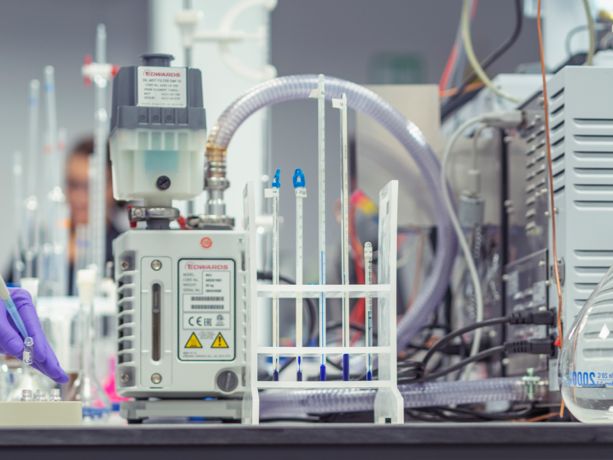Improved Catalysts Lead to More Efficient Methanol Production From CO2

Carbon dioxide is a major concern for industries around the world. One of the greenhouse gases contributing to climate change and global warming, scientists have been researching and developing new methods to remove and/or reuse this gas in more productive, less destructive ways.
Some of the biggest pushes in recent research have focused on capturing CO2 emissions before they can impact the atmosphere, and finding alternative ways to produce more environmentally-friendly and value-added materials from carbon dioxide.
Interestingly, new experimentation from Tokyo Tech in Japan shows promising results for both via a novel refinement to methanol synthesis from CO2 hydrogenation. Their method looks to increase the efficiency of methanol production with a new catalyst model that has the potential to reduce energy costs and improve the overall material yield.
Methanol is a simple alcohol that has emerged as a cost-effective, versatile alternative fuel source, producing fewer emissions than conventional options used in transportation. Using a catalyst, scientists can create methanol from carbon dioxide via a process called hydrogenation. As the name would suggest, hydrogenation is where hydrogen is added to react with carbon dioxide, produce water and methanol (which can then be extracted and purified via distillation).
Carbon dioxide hydrogenation is an exothermic reaction, which means it releases heat. To avoid excessively high temperatures (and the dangers associated with them), the catalyst to promote the reaction needs to work effectively at lower temperatures. This has led to the favouring of copper-zinc oxide (Cu-ZnO) catalysts, as the CuZnO-base creates an interface that promotes methanol production.
However, copper nanoparticles are thermally unstable, and will group together to form larger clumps during the reaction, which reduces the available interface. This is only accelerated by water – a by-product of methanol synthesis.
Recognising this, the team from Tokyo Tech have developed a novel way to protect and somewhat isolate the CuZnO particles – by encasing them in an outer coating of silica.
According to Professor Teruoki Tago, from the Department of Chemical Science and Engineering within the School of Materials and Chemical Technology at Tokyo Tech, ‘research indicated that encapsulating metals within porous carriers like silica or zeolite effectively mitigates thermal aggregation.’ He explains that it is this that shifted the focus of the team towards ‘developing a novel and efficient Cu-based catalyst for methanol production via CO2 hydrogenation, placing particular emphasis on encapsulating Cu nanoparticles within porous materials’.
During the course of their research, the team experimented with different methods of encapsulating the copper nanoparticles to find the most effective and efficient method. The end result was a copper-zinc oxide catalyst protected by a hydrophobic but porous silica outer layer. Not only did this prevent the copper from aggregating, it also protected the CuZnO interface from water damage – ensuring more efficient total methanol production.
Overall, this method shows a promising future for the development of new and efficient ways of methanol product via carbon dioxide hydrogenation in the search for alternative fuels.
Material identification with The Lab
Need to identify a new material? Or, do you need an investigation into whether a material conforms to certain standards or specifications? At The Lab, we have a premier materials analysis service to provide the answers you seek.
With material identification techniques that can confirm chemical composition, and the ability to conduct hardness and tensile testing in the lab or on-site, our experts are perfectly placed to offer you high-level results you need going forwards.
Discover chemical and mechanical material identification and hardness testing today
For more industry insights, and the latest news and information, check out The Lab’s News and Knowledge Hub…
Can Studying Bubbles Lead to More Efficient Biofuel? | New Technique Uses Paper Waste to Improve Carbon Reduction Reactions | Scientists Produce Glycerol Carbonate From Industrial Waste Materials
- Date
- 24/09/2024
